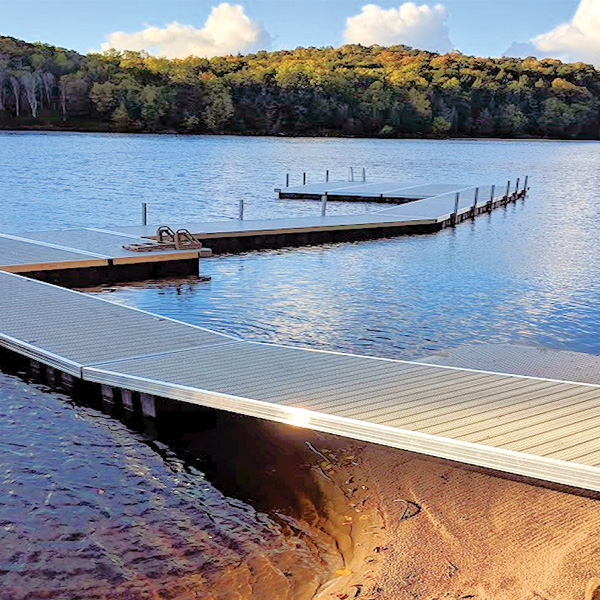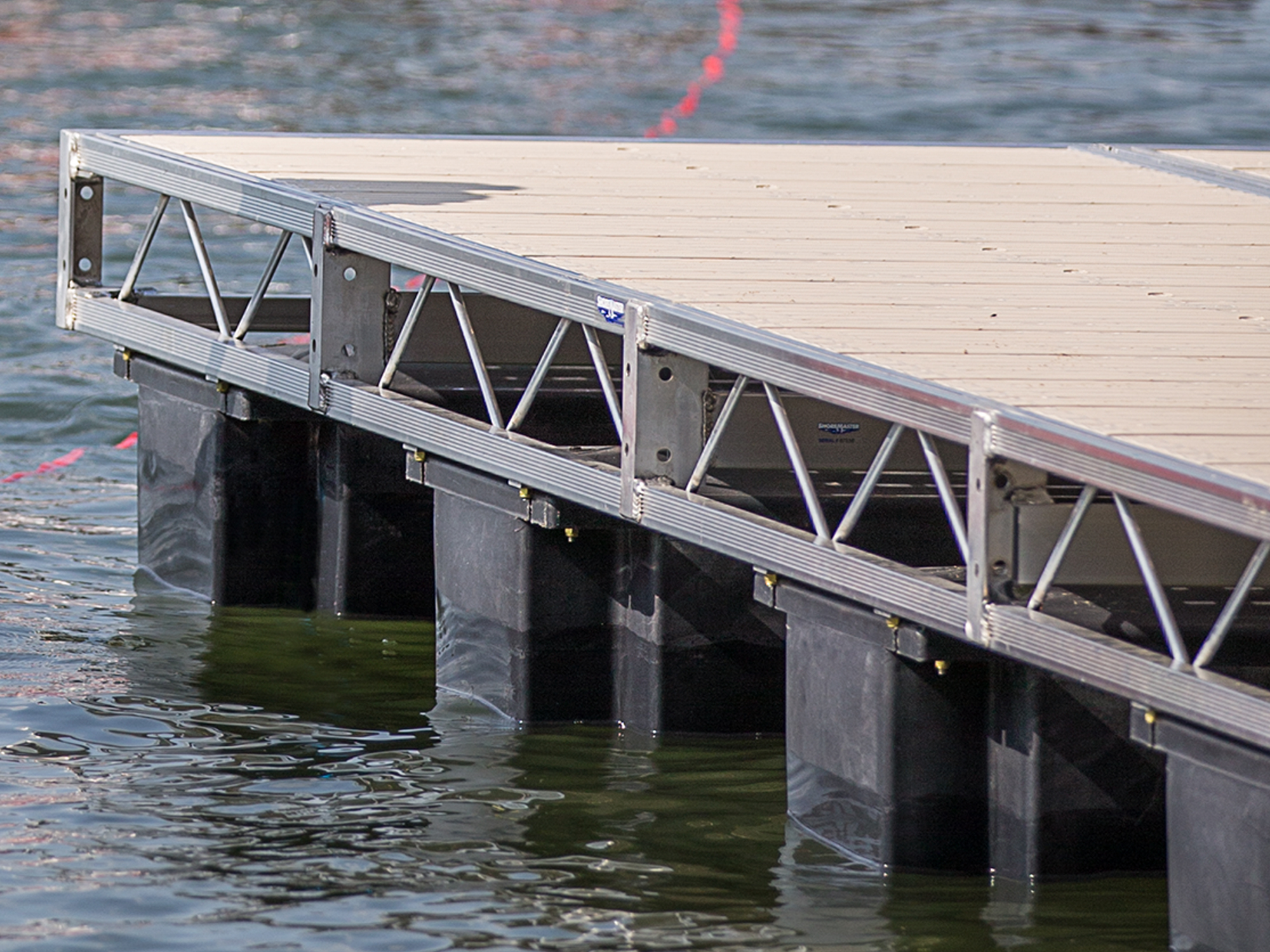Check out the Variety Of Floating Dock Services Designed to Suit Every Seafarer's Needs
Check out the Variety Of Floating Dock Services Designed to Suit Every Seafarer's Needs
Blog Article
Upgrade Your Beachfront With Long Lasting Floating Docks
Updating your waterfront with sturdy floating docks can significantly improve both performance and visual appeals, providing a flexible option for various water tasks. With an array of materials readily available, consisting of low-maintenance alternatives and typical timber, selecting the ideal dock can match your individual design and meet practical needs.
Benefits of Floating Docks
Floating docks deal a plethora of advantages that enhance their allure for different maritime applications. Unlike conventional fixed docks, floating docks rise and loss with the trend, guaranteeing consistent access for boats and watercraft no matter of environmental problems.
Additionally, floating docks are less complicated to transfer and install, giving versatility for temporary or seasonal use. Their modular design permits for customization to fit details requirements, whether for private marinas, household waterfronts, or business applications.
Additionally, floating docks develop very little disruption to the aquatic atmosphere, preserving regional ecosystems and decreasing the chance of erosion. They likewise give improved safety and security and stability for customers, as their buoyant nature uses a more forgiving surface than inflexible frameworks.
Furthermore, floating docks can assist in a varied array of activities, such as fishing, swimming, and leisure boating, making them a beneficial asset for waterside advancement. Their versatility and practicality make floating docks a recommended selection for a variety of maritime jobs.
Selecting the Right Products
Picking ideal materials for floating docks is vital to their longevity, performance, and general efficiency. When selecting materials, take into consideration variables such as ecological direct exposure, upkeep needs, and structural integrity. Common materials include wood, plastic, light weight aluminum, and composite alternatives, each offering distinctive benefits and negative aspects.
Timber, while cosmetically pleasing, calls for normal upkeep to stop rot and degeneration. Pressure-treated timber can improve toughness, however it might still yield to water damage in time. Plastic drifts, frequently made from high-density polyethylene, are immune to rust and call for very little maintenance, making them an eye-catching choice for low-maintenance applications.
Aluminum is another feasible alternative, understood for its strength and light-weight residential or commercial properties. It is resistant to corrosion and can endure harsh climate condition, although it might be a lot more expensive than various other materials. Compound products combine the very best attributes of wood and plastic, supplying a low-maintenance and resistant option that mimics the look of timber without the connected drawbacks.
Inevitably, the choice of product ought to straighten with the intended usage, environmental factors to consider, and budget restraints, making sure a functional and long lasting floating dock that satisfies your details needs.
Installment Process Introduction
The successful setup of a drifting dock relies upon cautious preparation and execution, making sure that it runs efficiently in its desired environment. The initial step entails evaluating website problems, including water deepness, coastline features, and prevailing weather condition patterns, which will certainly inform the dock style and anchoring system.
Adhering to the site evaluation, the following stage is to prepare the floating dock parts. This consists of putting together the structure, securing drifts, and affixing any needed equipment. It is vital to ensure that all connections are water-resistant and durable to endure aquatic problems.
As soon as the dock is assembled, the setup procedure starts with placing the dock in the water. This can entail a crane or various other training tools, specifically for bigger structures. Proper alignment is vital for capability and safety and security.

Maintenance Tips for Longevity
Normal maintenance is crucial for making sure the longevity and optimum performance of a drifting dock. To accomplish this, begin with routine inspections at the very least twice a year, concentrating on the integrity of the dock's structure, consisting of the flotation tools and connecting equipment. Look for indications of wear, deterioration, or damage, and deal with any type of additional resources issues immediately to avoid further damage.
Cleaning up is an additional vital aspect of maintenance. Eliminate particles, algae, and barnacles from the dock's surface area this hyperlink to stop unsafe problems and preserve visual allure. Use a moderate cleaning agent and a soft brush to avoid damaging the dock's materials.
In addition, ensure that the dock is correctly secured and safeguarded to hold up against seasonal changes in water levels and weather condition problems. Examine the anchoring system for security and make adjustments as necessary.
Enhancing Your Outdoor Aesthetic
To produce an aesthetically enticing exterior room, including a drifting dock can significantly enhance the overall aesthetic of your waterfront building. Floating docks are not just useful yet can additionally work as a striking prime focus that enhances the natural environments - floating dock company. Offered in different materials and designs, these docks can be customized to match your residential or commercial property's architectural style and landscape
The addition of decorative elements, such as integrated lighting or stylish railings, further elevates the dock's aesthetic charm. Think about using natural timber coatings, which blend seamlessly with the environment, or choosing modern-day products like light weight aluminum or composite decking that provide a sleek, modern look.
Strategically positioning planters or seating locations on or around the dock can produce welcoming areas that encourage leisure and satisfaction of waterside views. In addition, incorporating shades and appearances that balance with your landscape will create a natural aesthetic throughout your outdoor location.

Final Thought

Updating your waterside with durable floating docks can dramatically improve both performance and aesthetic appeals, providing a flexible solution for numerous water activities. Unlike traditional fixed docks, floating docks increase and loss with the tide, making sure consistent accessibility for boats and boat no matter of ecological conditions.Choosing proper products for floating docks is important to their long life, efficiency, and overall efficiency.When the dock is constructed, the installation process begins with placing the dock in the water.In recap, floating docks deal numerous advantages, including versatility to water degree adjustments and a selection of material options.
Report this page